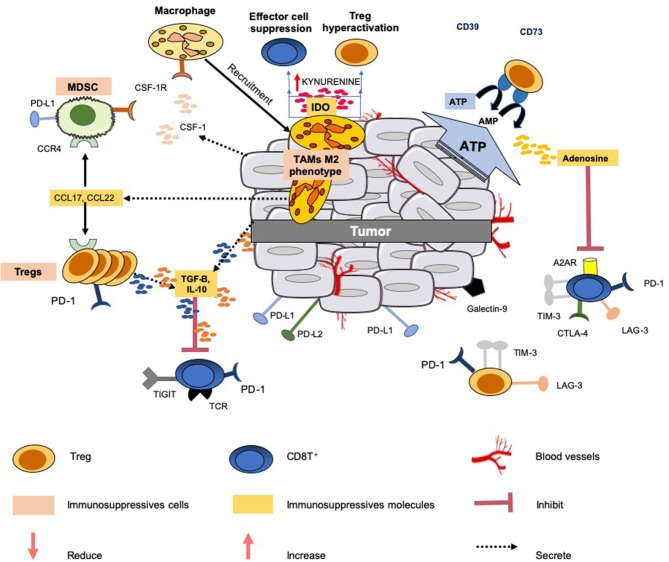Figure 1.
Immunosuppressive mechanisms common in the tumor microenvironment. Several mechanisms are developed by the tumor to limit an efficient tumor immunosurveillance, and therefore an unfavorable environment. This explains that a portion of epithelial cancers displays modest responses to immune checkpoint blockade therapy and other modulators of immunity. All the mechanisms known to interfere with these immunotherapies do not operate simultaneously in these cancers. This figure illustrates only a few common mechanisms of immune resistance to different tumors: (1) production and secretion of immunosuppressive factors into the microenvironment (such as TGF-β, IL-10, adenosine); (2) co-expression and/or upregulation of inhibitory receptors (LAG3, TIGIT, TIM-3,TIGIT) by immunosuppressive cells (Tregs, MSDCs and TAMs) and effector cells (CD8T+ and NK); (3) release of the chemokines CCL17 and CCL22 by the tumor which triggers the accumulation of Tregs and MDSCs to tumor sites; (4) release of IL-10 and TGF-β by Tregs which inhibit the functions of CD8+ T cells; (5) IDO expression by TAMs metabolizes tryptophan to kynurenine and limits T-cell function. Additionally, the tumor can also gain additional immunosuppressive properties, such as the expression of PD-L1, PD-L2, and secretion of suppressive cytokines (e.g., IL-10, TGF-β).

